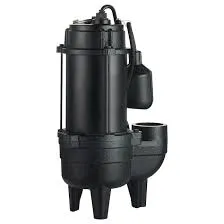Sinhala
- Afrikaans
- Albanian
- Amharic
- Arabic
- Armenian
- Azerbaijani
- Basque
- Belarusian
- Bengali
- Bosnian
- Bulgarian
- Catalan
- Cebuano
- Corsican
- Croatian
- Czech
- Danish
- Dutch
- English
- Esperanto
- Estonian
- Finnish
- French
- Frisian
- Galician
- Georgian
- German
- Greek
- Gujarati
- Haitian Creole
- hausa
- hawaiian
- Hebrew
- Hindi
- Miao
- Hungarian
- Icelandic
- igbo
- Indonesian
- irish
- Italian
- Japanese
- Javanese
- Kannada
- kazakh
- Khmer
- Rwandese
- Korean
- Kurdish
- Kyrgyz
- Lao
- Latin
- Latvian
- Lithuanian
- Luxembourgish
- Macedonian
- Malgashi
- Malay
- Malayalam
- Maltese
- Maori
- Marathi
- Mongolian
- Myanmar
- Nepali
- Norwegian
- Norwegian
- Occitan
- Pashto
- Persian
- Polish
- Portuguese
- Punjabi
- Romanian
- Russian
- Samoan
- Scottish Gaelic
- Serbian
- Sesotho
- Shona
- Sindhi
- Sinhala
- Slovak
- Slovenian
- Somali
- Spanish
- Sundanese
- Swahili
- Swedish
- Tagalog
- Tajik
- Tamil
- Tatar
- Telugu
- Thai
- Turkish
- Turkmen
- Ukrainian
- Urdu
- Uighur
- Uzbek
- Vietnamese
- Welsh
- Bantu
- Yiddish
- Yoruba
- Zulu
Telephone: +86 13120555503
Email: frank@cypump.com
දෙසැ. . 09, 2024 17:44 Back to list
Understanding the Function and Importance of a Septic Tank Pump for Home Waste Systems
What is a Septic Tank Pump?
A septic tank pump is an essential component of a septic system, which is used to manage household wastewater in areas without access to a centralized sewage treatment facility. Understanding the functionality, types, maintenance, and significance of septic tank pumps can help homeowners effectively manage their sewage systems and maintain a clean and healthy environment.
Functionality of Septic Tank Pumps
Septic tanks are underground chambers designed to treat and store wastewater from residential properties. They function by allowing solids to settle at the bottom, where they decompose through anaerobic digestion. The liquid waste, or effluent, then exits the tank and flows into a drain field or leach field, where it is further treated by soil bacteria before being released into the ground.
However, in certain circumstances where gravity cannot facilitate the flow of effluent to the drain field—such as in areas with a high water table or with a property that sits below the sewer line—septic tank pumps play a vital role. These pumps are responsible for transporting the wastewater from the septic tank to the drain field, ensuring that the system operates effectively and preventing potential backups or overflows.
Types of Septic Tank Pumps
There are generally two main types of septic tank pumps effluent pumps and grinder pumps.
1. Effluent Pumps These are the most common type and are designed to pump liquid waste, or effluent, away from the septic tank. Effluent pumps typically operate when the water level in the tank rises to a set point. They are suitable for systems that do not have a high volume of solid waste and are ideal for most standard septic applications.
2. Grinder Pumps These pumps are used in more complex septic systems where the wastewater contains a significant amount of solids. Unlike effluent pumps, grinder pumps have a built-in grinder that reduces solid waste to a slurry before pumping it to the drain field. This type of pump is particularly useful in homes with lower drainage elevations or where the terrain does not permit standard gravity flow.
what is a septic tank pump

Maintenance of Septic Tank Pumps
Proper maintenance of a septic tank pump is crucial for ensuring its longevity and effective operation. Here are some maintenance tips
- Regular Inspections Homeowners should have their septic systems inspected regularly, ideally once a year, to ensure that the pump and the entire system are functioning correctly.
- Cleaning Periodic cleaning of the septic tank is necessary to remove accumulated solids and prevent the pumping system from becoming overwhelmed. It is recommended that tanks be pumped every three to five years, depending on the size of the tank and the household’s water usage.
- Avoiding Chemicals Harsh chemicals can disrupt the natural bacterial processes in a septic system. Homeowners should avoid flushing items like grease, oils, and heavy-duty cleaners down the drain.
Significance of Septic Tank Pumps
The significance of septic tank pumps extends beyond just the management of household wastewater. They play a crucial role in protecting the environment and public health. When septic systems fail or back up, untreated wastewater can seep into the ground, contaminating local water supplies and harming ecosystems. Properly functioning septic tank pumps help maintain the integrity of the septic system and promote safe waste disposal.
In summary, a septic tank pump is a vital element of an effective septic system, ensuring the proper transfer of effluent to the drain field and contributing to the overall sanitation and hygiene of residential properties. By understanding the importance of these pumps, homeowners can take proactive steps in maintaining their septic systems and ensuring a clean and healthy living environment.
-
ISG Series Vertical Pipeline Pump - Chi Yuan Pumps Co., LTD.|High Efficiency, Energy Saving, Low Noise
NewsJul.30,2025
-
ISG Series Vertical Pipeline Pump- Chi Yuan Pumps|High Efficiency&Low Noise
NewsJul.30,2025
-
ISG Series Vertical Pipeline Pump-Chi Yuan Pumps Co., LTD.|High Efficiency&Energy Conservation
NewsJul.30,2025
-
ISG Series Vertical Pipeline Pump - Chi Yuan Pumps Co., LTD.|Advanced Hydraulic Design&Energy-Efficient Solutions
NewsJul.30,2025
-
ISG Series Vertical Pipeline Pump - Chi Yuan Pumps Co., LTD.
NewsJul.30,2025
-
ISG Series Vertical Pipeline Pump - Chi Yuan Pumps Co., LTD.|energy-efficient fluid handling&industrial durability
NewsJul.30,2025










